If you're planning to buy a .357 revolver, you're in luck. We have compiled the best .357 Magnum revolvers in the market and provided you with a buyer's guide to help you make an informed purchasing decision.
The .357 Magnum cartridge is the most popular go-to round for wheel gunners. You can also use it whether you carry a snubby for protection or a larger gun for target shooting, hunting, and hiking. It's also the ideal firearm for those who love to reload as the .357 is one of the most easily reloaded cartridges out there.
Summary of the Best .357 Magnum Revolvers
- Ruger LCR: A lightweight revolver with a stainless steel frame best for concealed carry.
- Taurus 617 Stainless: An affordable and durable revolver that's flexible and great for self-defense use.
- Ruger SP101: A solid steel sidewall revolver that has an adjustable rear-sight-model with barrel length options: a 2.25", 3", and 4".
- Smith and Wesson 66 Combat Magnum: A heavy, K-framed, 6-shot beauty with adjustable rear sight and decent grips.
- Smith and Wesson Stainless Model 60: A J-Frame revolver with a five-inch barrel that has a ramped front and adjustable rear sight.
- Ruger GP100: A revolver made of heavy stainless steel that has a triple-locking cylinder locked into the frame at the front, rear, and bottom to withstand recoil.
- Ruger Blackhawk: Tank-like revolver that is a strong, accurate, and durable gun.
- Smith and Wesson 686 Stainless: A revolver with a 6-inch barrel that is a hunter's dream gun with its impressive velocities.
- Colt Python: This legendary double-action Colt revolver returns in stainless steel alloy and a re-designed rear sight.
BONUS OFFER: Get your free shooting range targets to print at home!
Get your free targets to print at home!
A Little History
In the 1930s, gangs were roaming the countryside robbing banks and creating mayhem. In this period in American history, automobiles rose in popularity and affordability. It had become the getaway vehicle of choice which made robbers mobile and hard to stop.
The service revolver of the time was a four-inch .38 Special. It comes with a round nose lead bullet at around 800 fd and wasn't cutting it. Sometimes the only way to stop a gang was to shoot into their automobile and hope to disable the driver. The old .38 couldn't do that reliably.
Enter the .38 Super

Colt introduced a lengthened .38 Auto cartridge in 1929 called the .38 Super. This was the first cartridge approaching magnum-like velocities made for a semiautomatic pistol. Moreover, FMJ round nose bullets were better at passing thin sheet metal and glass. But the revolver was still the gun of choice for law officers.
.357 Magnum: The First Magnum Cartridge
The .357 Magnum cartridge was developed under the guidance of some of the most creative brains of its day. It debuted in 1934, during the height of the gangster renaissance. The cartridge was created by Elmer Keith and Smith & Wesson to meet the needs of both law enforcement and gang members who wanted a pistol with high ballistic potential.

An improved projectile had to be developed, which could pass through early bullet-proof jackets and automobile covers of that period. The caliber is often heralded as the first Magnum cartridge ever designed. Since its inception, the .357 is still within the top 5 most popular cartridges sold globally.
.38 Special vs .357 Magnum
The .357's power is far superior to its predecessor, the .38 Special. It fires at a muzzle velocity of 810 feet per second and can produce an impact force per square foot of just 189 pounds. At 1,440 feet per second, this .357 Magnum cartridge can strike with 575 pounds of force. Hence, more than doubling the force and raising the speed far above supersonic levels with roughly the same cartridge was a significant feat.
The .357 Magnum is often more costly than the .38 Special. Hence, the .38 Special is the more inexpensive alternative.
The .357 Magnum Today
The .357 guns that Smith and Wesson make are among their best-sellers. Even from the Depression-era days of the Registered Magnum, they couldn't keep up with demand. They had backlogs with orders for the four years they produced the Registered Magnum.
Today, the caliber's popularity continues. However, the original Model 27 Smith & Wesson no longer mass produces the original Model 27. Instead, they now include it in Smith and Wesson's Classic line of revolvers, available for an extra cost.
Why Get a .357 Magnum Revolver?
The.357 Magnum cartridge was perhaps the most powerful commercially available round for decades. It has also remained one of the most persistent handgun calibers over the last century. Revolver aficionados, police enforcement agencies, and military forces immediately adopted the cartridge as their preferred round.
The modern factory ballistics are softer than the original, but the .357 is still more than enough to get the job done. The 158-grain bullets fly with a muzzle velocity of approximately 1200 fps, whereas the 125-grain bullets run at a muzzle velocity of over 1400 fps. Despite its high energy output, the .357 is controllable when fired from a proper-sized, medium, or large-framed revolver. The recoil might make rapid-fire shooting with the .357 a little trickier, but its powerful initial shot can do enough damage to eliminate the need for further rounds.
The.357 Magnum has long been regarded as a reliable cartridge. So much so that it is popular with silhouette shooters who stretch out to 100 yards or more to knock down tiny steel targets. It is more than adequate for close-quarters combat and hunting at typical distances. With this weapon, you may quickly and humanely end the life of a game animal by driving it deep into its body.
Shooting the .357 Magnum
When the caliber was first introduced, Phil Sharpe went worldwide to test it on animals of all sizes. The 8 3/8", long-barreled revolver produced some very impressive velocities. In addition, it allowed people to kill animals that were not, up to that point, shot using a handgun.
That signaled the hype and the legend of the .357 Magnum. This caliber was the most powerful revolver load at that time. They described the gun as a man's-man type of gun that you had to wear gloves to shoot it better. However, those savvy shooters who owned this beast would shoot .38 Specials at least part of the time.
That accomplished two purposes. First, it lets the shooter shoot a lot more than if he was shooting full-bore .357 loads. Additionally, it saved wear and tear on the gun, enabling it to last longer.
Sometimes, a revolver that shoots only full-power magnum loads needs to go back to the factory for adjustment. This also needs tuning more often than one that shoots a mixture of light and heavy rounds.
Can I Shoot the .38 Special in a .357 Magnum Revolver?
The .38 and. 357 rounds are physically similar, yet there are distinct variances in their ballistics and performance. The .357 Magnum cartridge is longer than the .38 Special, prohibiting it from being loaded into less powerful revolvers. On the other hand, you may load .38 Special bullets into .357 Magnum rifles, offering a less powerful, lower recoil, and less costly shooting experience.
The .38 Special ammo does not generate the internal pressures created by.357 Magnum ammunition. If a handgun can tolerate greater pressures, it should be able to manage lower ones. But be sure your .38 caliber handgun can handle the extra strain. Otherwise, you may only shoot the .38 Special without causing damage to your weapon. Many revolvers for the .38 Special can't handle the longer .357 Magnum.
Popular Articles
Parts of a Revolver
Revolvers are relatively simple firearms. If you're a new gun owner and never handled or owned one before, here's a quick run-through.
Action
An action, or trigger group, comprises the components necessary to ignite a cartridge. It includes the trigger, hammer, and safeties as a single unit. Mechanics are developed and utilized according to the weapon's action. The function of the trigger determines the sort of action, whether single-action or double-action.
Frame
The frame is a metal enclosure that acts as the handgun's handle or grip. All other components are incorporated into or linked to the frame.
Barrel
The bullet goes through a metal tube known as a barrel. This is why the handgun barrel is shorter than the barrel of a rifle or shotgun. It was meant to be fired with one or two hands rather than against the shooter's shoulder. The barrel plays an important part in the bullet's accuracy, range, and velocity as it exits the chamber.
Cyclinder
Repeating handguns, like revolvers, hold more than one round of ammunition. The cylinder is what holds the ammunition in a revolver.
Buyer's Guide to the Best .357 Magnum Revolvers
Action Type: Single Action vs Double Action
Revolvers will either come in single or double action, both with their own set of pros and cons. To use a single-action revolver, you must pull the hammer to properly cock the gun after each shot. This mechanism produces a lighter and smoother trigger pull, leading to more accurate shots.
However, the trigger only does one job -- releasing the hammer. This means after every shot, you need to pull back the hammer. Hence, pulling the trigger with an uncocked gun won't do anything. That may not seem like a big deal, but you might need more practice and get used to it if you're coming off a semi-automatic pistol.
Also, be careful about dropping a loaded single-action revolver. It may discharge when dropped or struck with the hammer. This is also why most old-style single-action revolvers are chambered one less than the full capacity of the cylinder. You can pull back the hammer down to the starting position on the unloaded cylinder.
There are two types of double-action revolvers: those with the automatic firing mechanism and those you can manually cock like single-action firearms. When a firearm is designed to be manually cocked, the user's trigger action is double-action-only.
Using the double-action revolver's trigger-cocking instead of manual cocking, you can fire the shot more quickly. The heavier trigger pulls on double-action revolvers are also safer than single-action revolvers. Since it takes a long, deliberate draw to discharge, mechanical safety is not required for double-action revolvers.
Sights
A solid sighting is critical to having a successful shooting session. While most .357 magazines have fixed sights, some have adjustable sights. A fixed sighting is preferable if you want to use your pistol for a specific purpose.
You can opt for fixed sights for better stability and dependability in defensive circumstances where you don't want the recoil to knock it off. The adjustable sighting may be preferable if you're rotating between lighter and heavier rounds with variable velocities. Otherwise, you risk lowering your accuracy.
Safety
We touched on safety earlier with single and double-action revolvers. However, when you think about the safety of a revolver, it's not like the traditional safety you'd find on a semi-automatic pistol. You can find revolvers with safeties like the Ruger Rough Riders hammer block style safety. However, for the most part, the safety of your revolver relies heavily on the mechanism of action.
Without a single-action revolver, the bullet won't discharge when you pull the trigger unless the hammer is pulled back. On a double-action revolver, the safety is built into the trigger pull. This means that a double-action revolver will have a heavy, lengthy trigger pull that will require some effort to fire the gun. It'll make more sense once you try it out for yourself, but once you shoot, you can tell how solid and safe double-action revolvers can be.
Ergonomics
A revolver's weight advantage over a semi-automatic pistol is evident. Revolvers lack the typical spring and gas systems to aid decrease recoil. They depend on the cylinder chamber and frame's weight and design to do the heavy lifting. However, the extra-bulk is generally accompanied with highly designed, ergonomic grips that enable you to get a tighter grasp to avoid muzzle grip, no matter the size of your hands.
The downward extending grips also assist with establishing a higher hand position on your revolver, providing you complete, extended coverage of the revolver with your firing hand. This provides you with more control, more dependability, and it enables your better precision. To get the maximum satisfaction out of your shooting, you should never use a grip that doesn't feel natural in your hand.
The 9 Best .357 Magnum Revolvers
The following are similar, but they perform different functions due to the difference in barrel length and action. Here's the breakdown:
Now let's move on and talk about guns.
Ruger LCR
Specs
| Height | 4.5 inches |
| Length | 6.5 inches |
| Barrel | 1.875 inches, 3 inches |
| Width | 1.28 inches |
| Weight | 17.1 ounces |
| Capacity | 5 rounds |

The Ruger LCR series revolvers are among the best-concealed carry revolvers. Ruger employs polymer instead of a more costly metal like scandium to minimize weight. The LCR includes an exposed hammer, allowing shooters to fire single-action shots on demand. The LCR .357 Magnum variant has a 1.87-inch barrel and a lightweight polymer-infused frame.

The LCR is a five-round 357 magnum pistol that weighs only 17.1 ounces and has a capacity of five rounds. It has one of the greatest stock double-action triggers on the market, and it's a joy to shoot. The Hogue rubber grips on this handgun aid in reducing recoil and enhance your hold on the weapon.


It is safe to say that the LCR is one of the most cutting-edge concealed carry revolvers today. This tiny bulldog delivers a powerful punch. You'll need all the aid you can get from such a small .357 magnum, and the Ruger has that.
You will need to practice with your full-tilt loads, of course. But you can get by with a range session of 80% light loads and 20% or so of the barn-burners.
Need a holster for your Ruger LCR? Check out the Best Ruger LCR Holsters.
- Size and weight helps reduce recoil
- Lightweight and compact
- Comfortable Hougue grips
- Limited aftermarket parts available
Taurus 617 Stainless
Specs
| Height | 6.6 inches |
| Length | 6.5 inches |
| Barrel | 2 inches |
| Width | 1.53 inches |
| Weight | 28 ounces |
| Capacity | 7 rounds |

The Taurus 617 is built entirely out of stainless steel with a matte finish and weighs 28.3 ounces. The front sight is serrated to make it easier to see and pick up the sight. The broad hammer spur has a checkered surface, making the trigger feel more comfortable.


Rather than the Taurus "Ribber" type grips, the Taurus 617 has finger groove neoprene with a pebble finish. Its double-action trigger pull is 12lbs, typical for most modern double-action revolvers.

Its short barrel provides better concealment. It also reduces velocity and may not be as effective against dangerous targets as a shorter barrel. The Taurus 617 delivers the best of both worlds in terms of flexibility, making it a fantastic choice for self-defense.
- Durable stainless steel construction
- Wide and smooth trigger
- Rubber grip provides a comfortable hold
- Hard to remove empty cartridges in the cylinder
Ruger SP101
Specs
| Height | 4.5 inches |
| Length | 7.2 inches |
| Barrel | 2.25 inches, 3.06 inches, 4.2 inches |
| Width | 1.35 inches |
| Weight | 26 ounces |
| Capacity | 5 rounds |

The SP101 was launched in 1989 as a smaller frame version of the GP100 and is available in different calibers. Also, several barrel lengths are available for this revolver, including 2.25-inches, 3-inches, and 4.2-inches.

Ruger's SP101 is a tiny, reliable, and stylish revolver that may be used for self-defense, home defense, or both. It's highly dependable and made to last for many years. With a triple-locking cylinder, the SP101 ensures long-term reliability and accurate positioning.

Despite its small size, the SP101 fires softly. Recoil is far more controlled with this revolver's greater weight, sturdiness, and cushioned grip than it would be with other snub nose revolvers. You'll also have the best chance of striking your target accurately if you aim at it from a close range.

It comes fitted with lowered sights to lessen the possibility of catching on your garments while drawing the revolver from the concealed carry position. Each one has windage and elevation adjustable within the frame, and they are both set in place.
Read more: [Review] Ruger SP101: One Fun Handful Of A .357
- Accurate to shoot
- Build durable that will last a long time
- Reliable revolver
- Controlled recoil
- Heavy
- Rough trigger
Smith and Wesson 66 Combat Magnum
Specs
| Height | 5.7 inches |
| Length | 7.8 inches |
| Barrel | 2.75 inches |
| Width | 1.45 inches |
| Weight | 33.5 ounces |
| Capacity | 6 rounds |
| MSRP | $894 |

The new Model 66 is based on the company's K-frame, a medium-sized frame that dates back to the nineteenth century. The frame design has shown to be an excellent mix of durability, size, and weight after more than 100 years of real-world use. The original Model 66 was phased out in the early 2000s, and the new weapons have been dubbed the 66-8.
Adopting a two-piece barrel design is one of the most notable distinctions between the two guns. Model 66 revolvers had a single-piece barrel that needed more work to assemble. The two-piece construction consists of an inner barrel and a shroud.

Through the mid-1990s, the original Model 66 firearms had a full-size cylinder latch release. On the 66-8 models, the release on the thumb piece has a more triangular shape called a thumb piece. Stainless steel is used to make the cylinder and frame of both types of revolvers. The newer guns have a matte finish that many people think looks cheap, even though both types use stainless steel.

Smith & Wesson's new Model 66 has a time-honored sight configuration. The Model 66 Combat Magnum comes with a 2.75" barrel and delivers all of the handling benefits of a full-size revolver while still being concealable.

The gun's width and balance make it easy for medium-sized hands to wrap around the cylinder and perfectly control the firearm during a quick reload, making it easier for people to shoot.
- Smooth extractor rod movement
- Excellent accuracy and reliability
- Rubber grip provides a solid and comfortable hold
- Light and crisp single action trigger
- Rough double action trigger pull
Smith and Wesson Stainless Model 60
Specs
| Height | 4.25 inches |
| Length | 6.625 to 9.0375 inches |
| Barrel | 1.875 inches (original), 2.125 inches, 3 inches, 5 inches |
| Width | 1.31 inches |
| Weight | 23.2 ounces |
| Capacity | 5 rounds |

The Model 60 is well-known as the first mass-produced revolver made entirely of stainless steel. With a 5-shot capacity, it's an effective DA/SA stainless steel "J" frame revolver. It's a great conceal carry revolver with an underlug barrel, exposed hammer, and black synthetic grips that hold up well over time.

Faster follow-up rounds are possible even in DA mode because of the trigger's smoothness, a revolver lover's dream. 38 Specials.

The Model 60 is also exceptionally pleasant to handle with superb ergonomics. The black plastic grip is incredibly ergonomic and feels strong, enabling you to gain a firm, secure grasp. Just make sure to handle this gun correctly so none of the gun's controls, like the trigger, hammer, or cylinder release, will cause blisters or scratches on your skin.

The Model 60 is a very nice shooter with a.38, but it packs a lot of punch with a.357. Before using this pistol in the real world, it's advisable to train with the .38 Special first, followed by the .357 Magnum. The 3-inch barrel provides outstanding accuracy, and you can expect to consistently place shots on paper at a distance of ten to fifteen yards while using it.
- Faster follow-up shots in DA mode
- Ergonomic grip provides secure grasp
- Excellent accuracy and reliability
- Built to last long
- Only five shots
- Strong recoil
Ruger GP100
Specs
| Height | 5.7 inches |
| Length | 8 to 11.5 inches |
| Barrel | 2.5-, 3-, 4-, 4.2, 5-, 6- inches |
| Width | 1.54 inches |
| Weight | 40 ounces |
| Capacity | 6 rounds |

Ruger is a well-known brand in America for manufacturing quality handguns, like the GP-100 revolver. They were originally produced in 1985 with continued success in production for over three decades. It's an ideal revolver for self-defense, with fewer moving parts that make it easy to clean and maintain.

It is available in single-action or double-action models. Also, it has a double-action trigger that sports a 10-pound pull, which is lighter than other double-action revolvers on the market.


The GP100 is not for concealed carry because of its heavy and bulky weight. However, the recoil is manageable, and the grips allow easy handling. It's the ideal backup revolver you can bring for hog hunting or use for self-defense.
Read more: Ruger GP100 Revolver -- Expert Hands-On Review
- Built to last
- Light double action trigger
- Heavy weight mitigates recoil
- Easy to strip, clean, and maintain
- Not ideal for concealed-carry use
Ruger Blackhawk
Specs
| Height | 5.7 inches |
| Length | 12.39 inches |
| Barrel | 6.5 inches |
| Width | 1.73 inches |
| Weight | 48 ounces |
| Capacity | 6 rounds |
| MSRP | $1025.99 |

The Ruger Blackhawk is heavy, reliable, almost impossible to break, and more accurate than most shooters can hold. The Ruger Blackhawk boasts a great trigger and adjustable sights that contribute to exceptional overall accuracy.

It's perfect for long-range shooting and has minimal recoil. The Blackhawk is equipped with coil springs rather than the traditional leaf springs. It also has adjustable sights for long-range precision.
It is possible to load the Ruger Blackhawk single-action rifle by opening the loading gate and then manually filling the chambers one round at a time while the cylinder is turned. The Ruger does not include a half-cock notch. It is safe to carry, with six rounds in the chamber and a cartridge under the hammer. Single-action revolvers are slower to load, shoot, and unload than double-action revolvers, but their power and precision might be more significant in particular situations.
- Classic cowboy look
- Reliable and durable
- Accurate and easy to use
- Excellent adjustable sights
- Some models may have some factory defects
Smith and Wesson 686 Stainless
Specs
| Height | N/A |
| Length | 11.9 inches |
| Barrel | 2.5-, 3-. 4-. 6-, and 8.325 inches |
| Width | 1.56 inches |
| Weight | 45 ounces |
| Capacity | 6 rounds |

Taurus provides the pistol in three different barrel lengths: 4, 6.5, and 8.37 inches. When it comes to scope installation, the 6- and 8.37-inch variants include vented ribs, while the 4-inch model does not. It only uses stainless steel for its finish.

All models include a pinned, dovetailed black steel front blade sight and an adjustable black steel rear sight. The optics are rudimentary, but they do a good job of letting you see. Also, the muzzle of the barrel has a port on top of it.

Taurus uses standard black molded rubber grips on their .44 Mag model. In the past, the gun had soft radiator-style handles that some people didn't like. So, it's a nice change to the new models. There is also a transfer bar safety, double-locking cylinder at the crane and the rear, and a Smith & Wesson-style cylinder release in the revolver's firing mechanism.

Some of the .44 Magnum's recoil is absorbed by the grips, which makes this revolver pleasant enough to use. It's easy to handle light loads, and a full house is no problem. In terms of accuracy, it's more than enough for anything from target shooting to home protection to handgun hunting from an acceptable range.
Need a holster? Read our review: Best Holsters For The Smith & Wesson 686
- Durable build
- Comfortable grips
- Comes in different barrel lengths
- Stainless steel material for corrosion resistance
- Limited aftermarket parts available
- Heavy
Colt Python
Specs
| Height | 5.5 inches |
| Length | 9.75 inches |
| Barrel | 3-, 4.25-, and 6 inches |
| Width | 1.55 inches |
| Weight | 42 ounces |
| Capacity | 6 rounds |

The new Colt Python features a mirror-like sheen, making it a stunning weapon. The Python was Colt's most popular snake pistol, introduced in 1955.
With a 4.25-inch or 6-inch barrel, the gun looked a lot like its predecessor, although it had some internal modifications. Some new firearms had minor faults that needed a return to Colt for repair. As a result, the rifle received much attention on numerous gun forums.
In the mid-20th century, it was recognized as the best production revolver ever built by many gun writers. It's beautiful that you must see if you're into revolvers.
- Eye-catching aesthetic
- Easy to clean and maintain
- Well-balanced and accurate at long distances
- Adjustable rear sights
- Available in three different barrel lengths
Our Top Pick from the 9 Best .357 Magnum Revolvers
The Ruger LCR is an excellent .357 Mag revolver is a compact firearm that also does a great of concealing the attacking recoil of the .357 round. It features a nice double-action trigger that makes shooting follow-up shots easier. It's also one of the most modern revolvers you can get today that meets the demands of modern shooters.
The grips are superb, allowing you to have more control over the weapon. Also, it's a Ruger brand. Hence, you know that it's reliable and built to last.
Wrapping Up
That concludes our review of the best .357 Magnum revolvers. If you are looking for a .357 Magnum revolver to shoot or add to your collection, any of the revolvers listed above is a good pick.
However, if you're still unsure of which one to buy, you can always check our buyer's guide to help you figure out which one will suit your needs. Any shooter can enjoy the .357 Magnum round. Remember that all it takes is practice to get used to controlling the recoil. Keep it up, and you'll be like a pro shooter in no time.
What are your thoughts about .357 Magnum revolvers? Do you have a favorite gun? Let us know in the comments below.





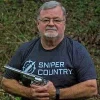

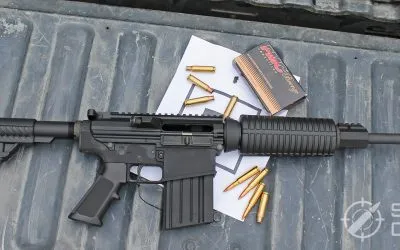
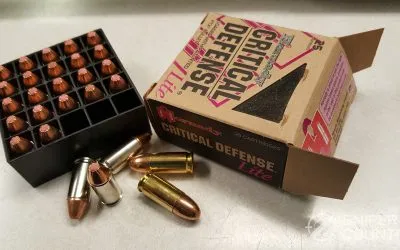
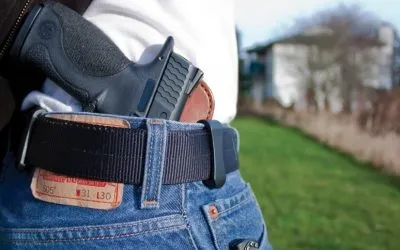
![9mm Glock Models [Ultimate Guide]](https://snipercountry.com/wp-content/uploads/2018/10/Glock-17-vs-Glock-19-vs-Glock-26-vs-Glock-41-vs-Glock-43-WM-400x250.webp)
![Handgun Caliber Chart [2025 Ultimate Guide]](https://snipercountry.com/wp-content/uploads/2018/10/Handgun-Caliber-Comparison-400x250.webp)
![Rifle Calibers [Ultimate Guide]](https://snipercountry.com/wp-content/uploads/2018/12/Header-1900-400x250.webp)
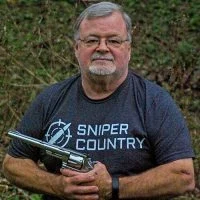




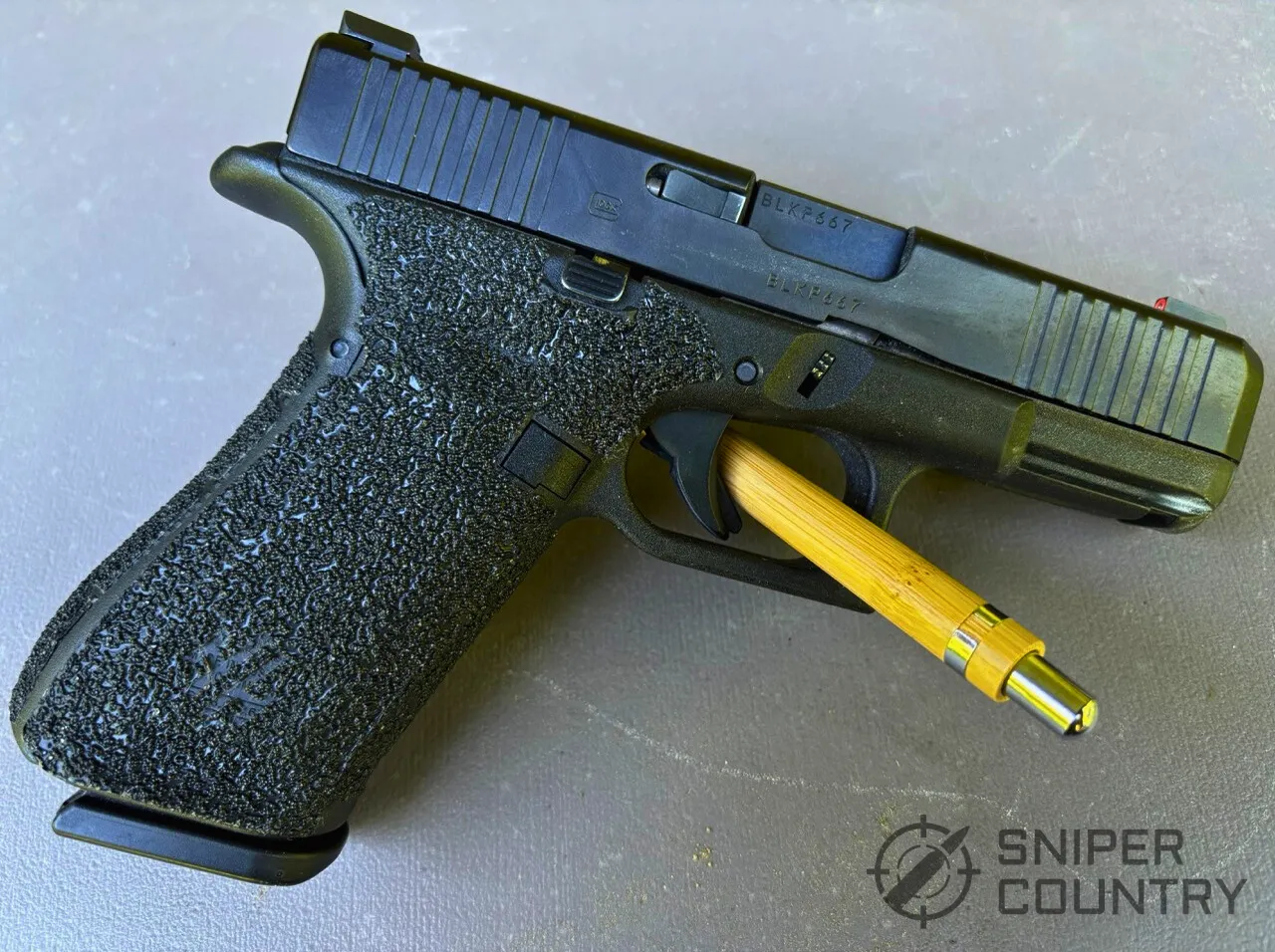
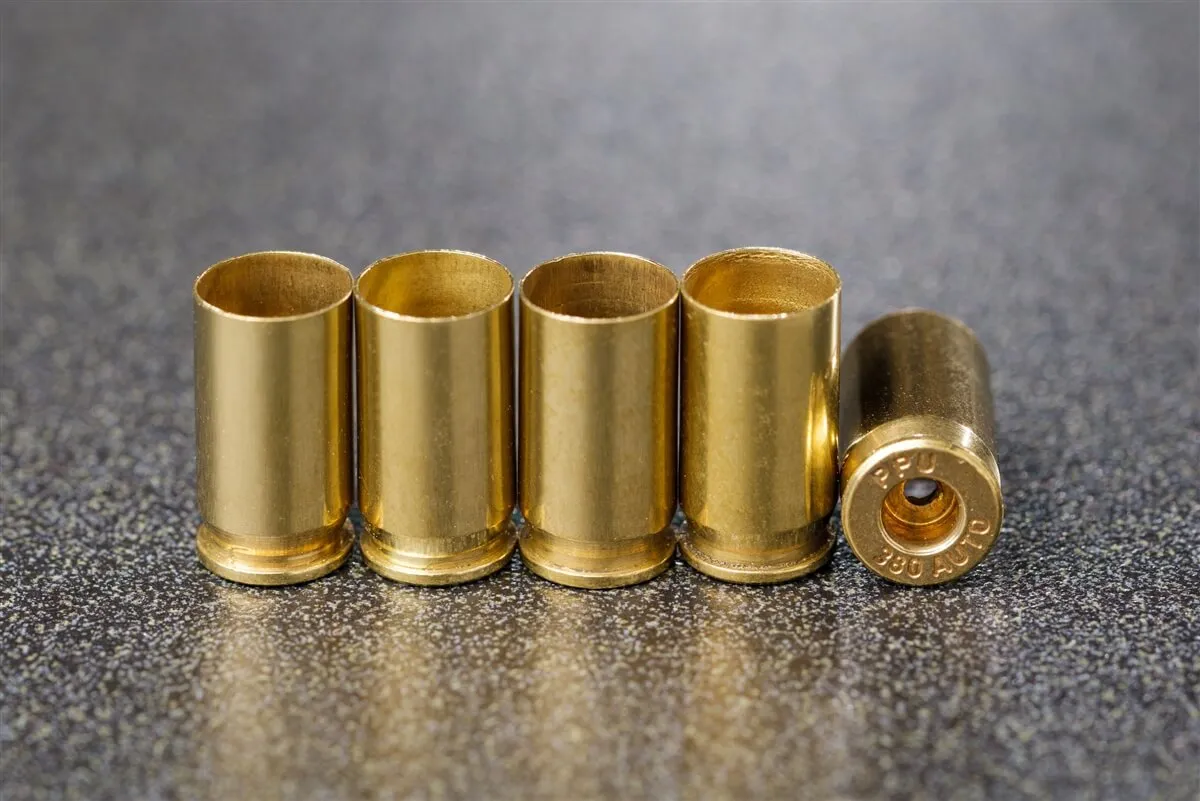
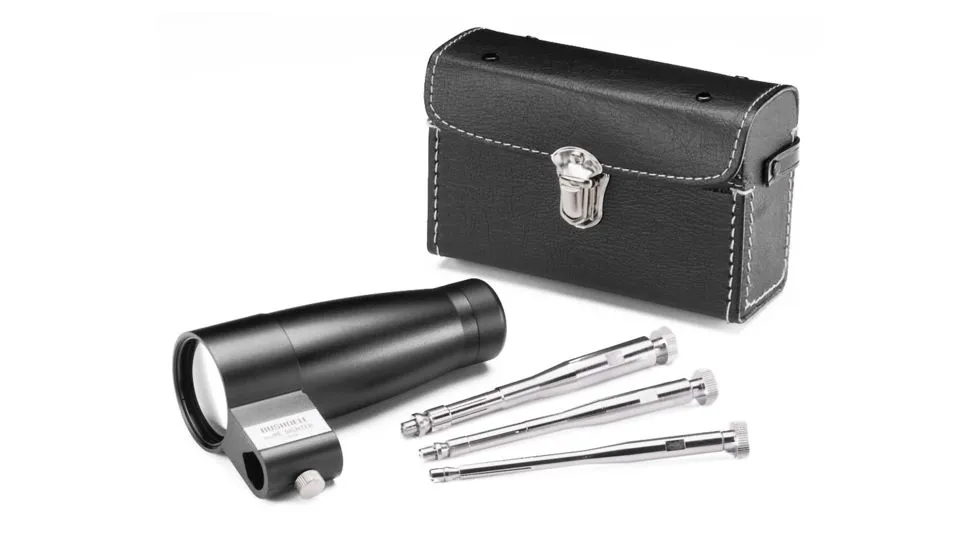
24 Responses
Just got done reading and I got to say that it is the best article I have read on my most favorited caliber
Chuck, glad to help. Thanks for writing!
Enjoyed your article. I pondered long and hard prior to purchasing my 2nd hand gun. 1st is a 638 S&W for concealed carry. Being a small person I have smaller hands and wanted quality, accuracy and the ability to repeatedly use my 2nd purchase. A 686 S&W Competitor. It is an absolute joy. It actually fits my hand and the extra weight truly absorbs the recoil. It’s easier to shoot than the 638. I can hit 5″ groups at 100yds with bifocals with it. It’s a keeper.
Robert, excellent shooting! How long is the 686’s barrel? For you to print 5″ groups at 50 yards would be impressive, but 100 yards – excellent! Glad you found something that works. (And I know how hard it is to see sights with bi/trifocals…), Thanks for writing!
As a new firearm and ccw permit owner, I have used this website to learn a great deal of information. Thank you for the time and effort you put into these articles. These articles read like asking a friend for their opinion, not a sales pitch for a company.
Dan, glad that my reviews are helpful. I’m just a plain ol’ shooter, not a marketing rep. I put info out for others like I would want to read in a review. I just try to be objective in my reviews which hopefully helps you. Thanks for the kind words!
Not sure how this list missed a TRR8?
Joe, the S&W 327 is another great gun and the Perf. Center TRR8 is its epitome. I just tried to include some more general-purpose 357s for average shooters. There are a ton of guns I could’ve included, but I had to draw the line somewhere. I appreciate your comment – thanks for writing!
I purchased a 686 with a 7 inch barrel a year ago and love it. The extra weight of the barrel helps with the 357 recoil. It’s a nice looking revolver with wood grips and smooth cylinder.
Basically use it for target shooting. Easy to handle with 38 special rounds. Love this gun. Would consider buying another with a 5 or 6 inch barrel.
Also like your articles, very informative.
Thanks
Gerald, yeah, the 686 is a great gun. It’s one against which others are compared. Its blued partner, the 586, was in great demand and the stainless 686 is no different. Thanks for writing!
Interesting how many of these articles avoid even mentioning the Kimber K6S. Not only is it very well built like the Rutgers, but it is a six shot and ca fit in a pocket or concealed holster far easier than many of the guns you profiled.
Phil, I did talk about the K6S in my round-up of Best Revolvers: http://143.244.165.192/best-revolver/#Kimber_K6
It is a great gun, to be sure – I really like it. I just had to draw the line somewhere – I could’ve included a hundred guns but couldn’t do that. I appreciate your comment – thanks for writing!
Another really good article Mike. You covered a lot of information in a relatively short space. I agree that .357/.38 Spec is the most all around practical caliber to own. From snake loads to deer at moderate distance, and everything in between.
I’ve always felt that if I was limited to only 1 gun, a .357 Mag Revolver in 4″ to 6″ either S & W (or Ruger after reading your reviews) would be the gun I’d choose.
Much as I enjoy my semi’s, a well made revolver is darn near indestructible under normal wear and tear, and will last a very long time with simple maintenance.
.357/.38 can easily be reloaded with the most basic and simplest of reloading equipment, the Lee Loader. That’s how I got into reloading 40 years ago, and even though I’ve long since retired that Lee kit, it’s still sitting on a shelf in my cabinet (though the cardboard box fell apart years ago).
You did a great job of covering a large number of different revolvers in a very concise write up. I know how difficult that is to do, and IMHO you nailed it.
Thank you for your work covering guns and gear, and I hope to see your byline for many more years to come.
Bemused, wow, I really appreciate your kind words. It is different, writing about several guns at once vs. a one-gun-review — hopefully what I wrote will help prospective buyers with pertinent information. Thanks again for writing – always like reading your comments!
Hey Mike, once again you have done a fantastic job of reviewing some AWESOME firearms. I happen to own a Stainless Ruger Security Six 4″ – it was my 1st gun I bought new in 1980 I think and I swapped out the walnut grips with Pachmeyer ones for improved recoil. I mostly shoot .38 spl to save the gun wear (and me) but it is an outstanding wheel gun. My wife carries a Ruger 5 shot LCR in .38 SPL +P with the Crimson Trace laser grips on a daily basis and loves it. Thanks again for your great reviews.
Bill, glad you enjoy my reviews. Those Security Sixes are great. Also, sounds like your wife is well-armed. Thanks for writing!
The first handgun I ever owned was a Ruger Blackhawk convertible .357/9mm with a 6-1/2″ barrel I got back in the early ’80s. It cost me $164 brand new, if I remember right. Got it at the Camp Pendleton PX back when they sold such things.
Switching cylinders only took a few seconds, and it was incredibly accurate with .357, .38, and 9mm. I shot what is still the best group I’ve ever shot with that revolver, a 5-shot group at 25 feet I can cover with a quarter; for extra sentimental value, that was with the first box of ammo I ever reloaded.
Talk about guns I wish I’d hung onto!
Jim, yeah, we all have those guns that we let get away. Sounds like that one was extra-special! Certainly accurate enough. Hopefully you’ll find something close to it. Thanks for writing!
I have a Ruger Security Six magnum. 6 in.barrel. Blued version. Love it.
Larry, that’s a great gun. I remember when they came out – they were very popular. Glad you enjoy yours! Thanks for writing.
My first handgun was a Colt Gold Cup Series 80, my second was a S&W 586, 6″. I started reloading soon after, cut my teeth on .38s, then 357s and .45acp. I gave the .357 to a friend who needed it more than I did. I never regretted it but, I sure missed it. . Just last year, I was fortunate to acquire a 686 from an old timer. One of the best purchases I’ve ever made. It’s about context and appreciating something that was well thought out and manufactured so that average guys could afford and enjoy it for years. Thanks for another great article.
Honu, glad you could replace your 586. The 596/686 is one gold standard for .357 revolvers, to be sure. It’s good that you reload for it, especially in these times. Thanks again for writing!
In .357’s I have Ruger LCR, SP101 3″, SP101 .2″, GP100 4.2″ (gave to son in law & daughter), Blackhawk 6.5″ w/ extra 9mm cylinder and a 77/357 rifle. For me this is the most versatile center fire pistol cartridge. The Blackhawk is so absolutely amazingly accurate with 38’s, 357’s and 9mm; really does not care what is in it. And .357’s out of the model 77 rifle are eye opening for both power and accuracy. I have already shot 5 different .357 loads out if this gun in one session to test POI differences: none! For whatever reason though, 38’s shoot low and left, so I do not bother with them in this gun. Remington 38_P’s though shoot very close to the .357’s. CCI shot shells in the revolvers have dispatched a number of dangerous snakes. Love the versatility.
Just Me, you sure have the .357 arena covered! You are right – it is one very versatile cartridge. No wonder it is so popular. The .38 Special angle doesn’t hurt, either. I appreciate your comments – thanks for writing!